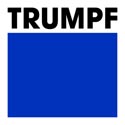Compact X-ray and EUV Light Sources Incubator Meeting
Events
OSA Compact EUV & X-ray Light Sources Incubator Meeting |
|
13-15 November 2013 HOSTED BY:
Lahsen Assoufid, Argonne National Laboratory, USA; Sandra G. Biedron, Colorado State University, USA |
Topic Overview
This incubator meeting addressed the requirements driving the future brighter and more compact light sources in the EUV and X-ray regimes derived from the needs of light source users from industry, academia, national laboratories, and services and agencies. The requirements have been outlined in several recent reports including the Department of Energy Report “Accelerators for America’s Future,” the National Academies Report “Optics and Photonics – Essential Technologies for our Nation,” as well as the recent DOE Basic Energy Science Workshop on Compact Light Sources. Further, the recent DOE workshop “Lasers for Accelerators,” mapped out laser requirements for several new light sources and light-source drivers. This meeting provided a forum to discuss and document future requirements for compact x-ray and EUV light sources and peripheral equipment from the perspective of the end-user community and began the proccess of documenting current technology gaps and challenges to meeting future requirements.
Brighter and more powerful compact light sources will bridge the gap between traditional lab sources and larger storage ring-based and FEL sources and will create a new breed of user communities. The overall goal is to understand the scientific grand challenges, the technical challenges to sources and peripherals, and identifying areas where different technologies or emerging technologies might be leveraged together or differently to help reach source and scientific challenges. Since the technology spans several areas of source and user applications, the Incubator Meeting provided a new forum for learning and discussion.
Program Overview
This 2-day incubator sponsored by The Optical Society brought together the scientific developers and users of compact short wavelength (EUV and X-ray) lights source and those producing components and peripheral equipment, such as accelerator devices, high power lasers, optics and detectors, diagnostic tools and controls of these sources.
The meeting included several short talks which helped seed the discussions in the areas of science and technology drivers; peripheral equipment required (such as detectors); summary of existing sources in these wavelength regimes.
After these seed talks, several workgroups convened. One on emerging science and technology drivers of these sources; another on the technology shortfalls for bright compact sources and suggested activities to reduce these technology gaps; and industrial needs. A report of the meeting with the names of all participants will be featured in Optics and Photonics News.
Meeting Schedule (see full agenda)
Sponsors
 |
 |
 |
 |
Attendee List
Uwe Arp, National Institute of Standards and Technology, United States; Lahsen Assoufid, Argonne National Laboratory, United States; Sandra Biedron, Colorado State University, United States; Paul Blackborow, Energetiq Technology, Inc., United States; Charles Brau, Vanderbilt University, United States; Marie-Emmanuelle Couprie, Synchrotron SOLEIL, France; Mark Curtin, Boeing, United States; Jay Dawson, Lawrence Livermore National Laboratory, United States; Jochen Deile, TRUMPF, Inc., United States; Udo Dinger, Carl Zeiss AG, Germany; Joel England, SLAC National Accelerator Laboratory, United States; Alan Fry, Stanford PULSE Institute, United States; William Graves, Massachussetts Institute of Technology, United States; Hans Hertz, Royal Institute of Technology, Sweden; Tetsuya Ishikawa, RIKEN Harima Branch, Japan; Askat Jailaubekov, Cymer, Inc., United States; Jonathan Jarvis, Advanced Energy Systems Inc, United States; Annie Klisnick, University of Paris-Sud, France; James Lawler, University of Wisconsin-Madison, United States; Michael Lercel, SEMATECH, United States; Cecile Limborg-Deprey, SLAC National Accelerator Laboratory, United States; Ingolf Lindau, SLAC National Accelerator Laboratory, United States; Yanwei Liu, KLA-Tencor Corporation, United States; John Madey, University of Hawaii, United States; Malcolm McGeoch, Plex, United States; Stephen Milton, Colorado State University, United States; David Moncton, MIT Nuclear Research Reactor, United States; Margaret Murnane, JILA, University of Colorado at Boulder, United States; Alex Murokh, RadiaBeam Technologies, LLC., United States; Patrick Naulleau, Lawrence Berkeley National Laboratory, United States; Enrique Parra, Wright-Patterson Air Force Base, United States; Tor Raubenheimer, SLAC National Accelerator Laboratory, United States; David Reis, Stanford University, United States; Martin Richardson, CREOL/Townes Laser Institute, University of Central Florida, United States; Jorge Rocca, Colorado State University, United States; Jim Rodriguez, Rigaku, United States; Ronald Ruth, Lyncean Technologies Inc./SLAC, United States; Eric Szarmes, University of Hawaii at Manoa, United States; John Tardiff, Coastline Optics, Inc., United States; Aaron Tremaine, SLAC National Accelerator Laboratory, United States; Dong Wang, Shanghai Institute of Applied Physics, China; Wenbing Yun, Xradia, Inc., United States
